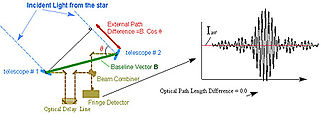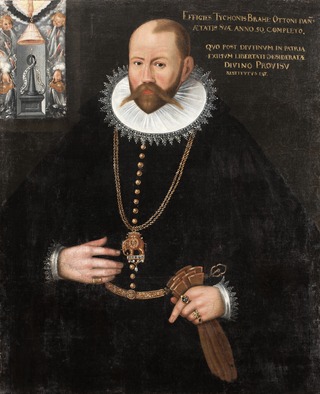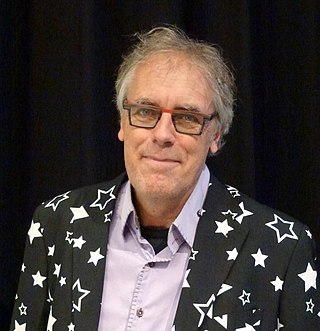
Astrometry is a branch of astronomy that involves precise measurements of the positions and movements of stars and other celestial bodies. It provides the kinematics and physical origin of the Solar System and this galaxy, the Milky Way.

Tycho Brahe, generally called Tycho for short, was a Danish astronomer of the Renaissance, known for his comprehensive and unprecedentedly accurate astronomical observations. He was known during his lifetime as an astronomer, astrologer, and alchemist. He was the last major astronomer before the invention of the telescope. Tycho Brahe has also been described as the greatest pre-telescopic astronomer.

Tycho is a prominent lunar impact crater located in the southern lunar highlands, named after the Danish astronomer Tycho Brahe (1546–1601). It is estimated to be 108 million years old.
Flexible Image Transport System (FITS) is an open standard defining a digital file format useful for storage, transmission and processing of data: formatted as multi-dimensional arrays, or tables. FITS is the most commonly used digital file format in astronomy. The FITS standard was designed specifically for astronomical data, and includes provisions such as describing photometric and spatial calibration information, together with image origin metadata.

The Space Telescope – European Coordinating Facility (ST-ECF) was an institution which provided a number of support and service functions primarily for European observers of the NASA/ESA Hubble Space Telescope (HST). It was established in 1984 by the European Space Agency (ESA) and the European Southern Observatory (ESO), and was located at the ESO headquarters in Garching bei München, Germany. The ST-ECF ceased operations on 31 December 2010.

NGC 1365, also known as the Fornax Propeller Galaxy or the Great Barred Spiral Galaxy, is a double-barred spiral galaxy about 75 million light-years away in the constellation Fornax. It was discovered on 2 September 1826 by Scottish astronomer James Dunlop.

The International Year of Astronomy (IYA2009) was a year-long celebration of astronomy that took place in 2009 to coincide with the 400th anniversary of the first recorded astronomical observations with a telescope by Galileo Galilei and the publication of Johannes Kepler's Astronomia nova in the 17th century. The Year was declared by the 62nd General Assembly of the United Nations. A global scheme, laid out by the International Astronomical Union (IAU), was also endorsed by UNESCO, the UN body responsible for educational, scientific, and cultural matters.

The ESA/ESO/NASA FITS Liberator is a free software program for processing and editing astronomical data in the FITS format to reproduce images of the universe. Version 3 and later are standalone programs; earlier versions were plugins for Adobe Photoshop. FITS Liberator is free software released under the BSD-3 license. The engine behind the FITS Liberator is NASA's CFITSIO library.
The Hubble European Space Agency Information Centre (HEIC) is a science communication office, established at the Space Telescope - European Coordinating Facility (ST-ECF) in Munich, Germany late in 1999. This initiative was taken so as to fulfil the NASA/ESA Hubble Space Telescope (HST) outreach and education tasks for the European Space Agency (ESA), as outlined in an agreement between NASA and ESA.

Hubble – 15 Years of Discovery (ISBN 0-387-28599-7) is a book that formed part of the European Space Agency's 15th anniversary celebration activities for the 1990 launch of the NASA/ESA Hubble Space Telescope. Its main emphasis is on the exquisite Hubble images that have enabled astronomers to gain entirely new insights into the workings of a huge range of different astronomical objects. Hubble has provided the visual overview of the underlying astrophysical processes taking place in these objects, ranging from planets in the Solar System to galaxies in the young Universe. This book shows the close relationship between the results of great scientific value and of eye-catching beauty and artistic potential.

An astronomical catalog or catalogue is a list or tabulation of astronomical objects, typically grouped together because they share a common type, morphology, origin, means of detection, or method of discovery. The oldest and largest are star catalogues. Hundreds have been published, including general ones and special ones for such items as infrared stars, variable stars, giant stars, multiple star systems, star clusters, and so forth.
Astronomy Visualization Metadata (AVM) is a standard for tagging digital astronomical images stored in formats such as JPEG, GIF, PNG and TIFF. The AVM standard extends the concept of Extensible Metadata Platform (XMP) headers to include useful astronomical information about the subject of the image as well as the telescope used to take the image. This ensures that relevant information is transferred with the image when it is shared with others. AVM could be considered analogous to the FITS headers associated with raw astronomical data files.

Govert Schilling is a Dutch popular science writer and amateur astronomer.
Christine D. Wilson is a Canadian-American physicist and astronomer, currently a University Distinguished Professor at McMaster University.

Petr Horálek is a Czech astrophotographer, popularizer of astronomy and an artist.
Michael Perryman is a British astronomer, known for his work leading the Hipparcos and Gaia space astrometric projects.

Stefano Vitale is an Italian physicist and a retired professor of experimental physics at the University of Trento. He is known for his scientific contributions in the field of gravitational wave (GW) research and the successful management of international scientific projects.













